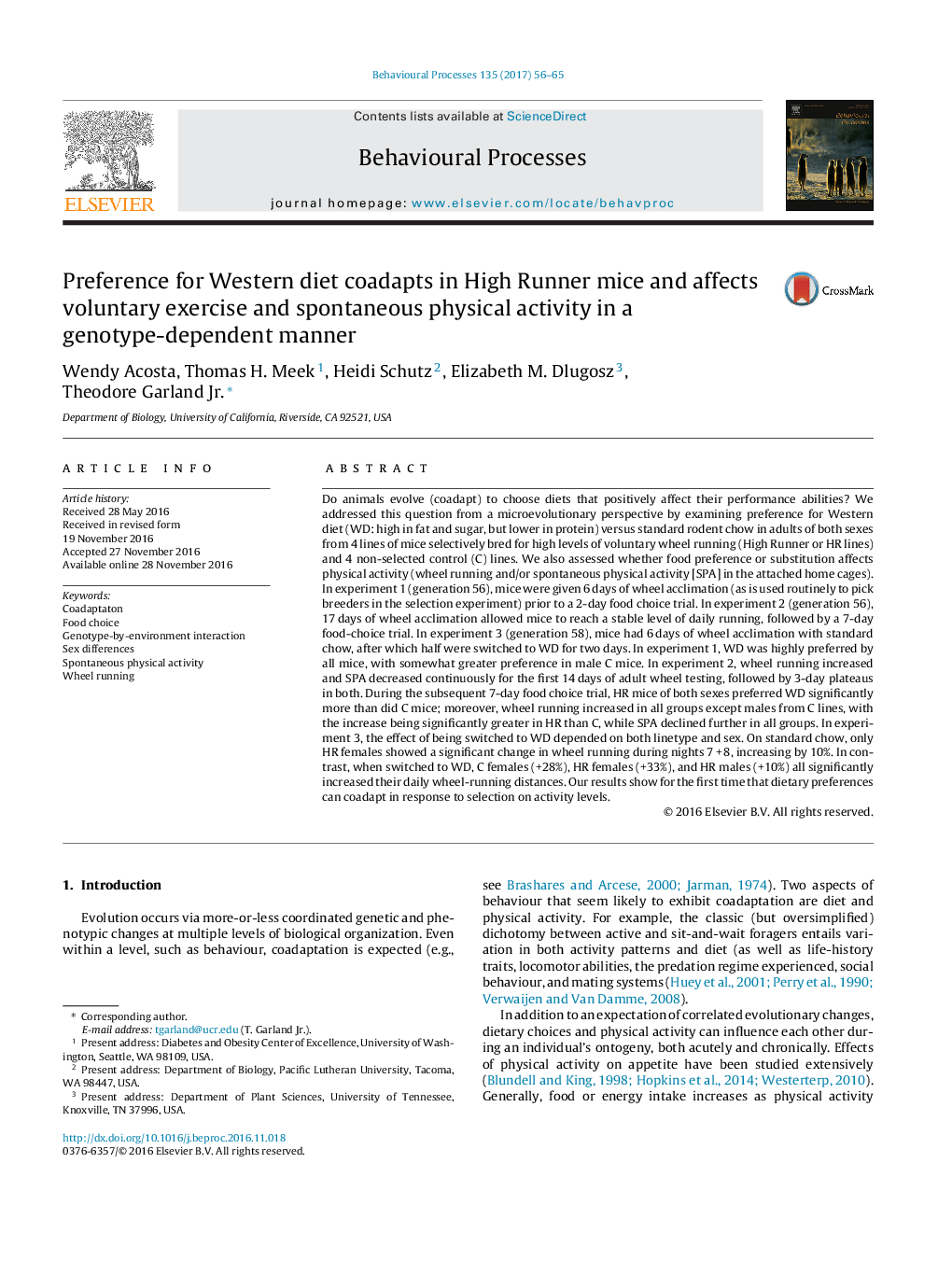| کد مقاله | کد نشریه | سال انتشار | مقاله انگلیسی | نسخه تمام متن |
|---|---|---|---|---|
| 5539699 | 1553145 | 2017 | 10 صفحه PDF | دانلود رایگان |
- Preference for Western diet (WD) was tested in genetically High Runner (HR) mice.
- HR mice of both sexes preferred WD to a significantly greater extent than did Control mice.
- WD had a larger stimulatory effect on wheel running in HR mice than in Control mice.
- Home-cage activity declined when wheel running increased (including with WD).
- Substituting WD for chow revealed strong genotype-by-environment interactions.
Do animals evolve (coadapt) to choose diets that positively affect their performance abilities? We addressed this question from a microevolutionary perspective by examining preference for Western diet (WD: high in fat and sugar, but lower in protein) versus standard rodent chow in adults of both sexes from 4 lines of mice selectively bred for high levels of voluntary wheel running (High Runner or HR lines) and 4 non-selected control (C) lines. We also assessed whether food preference or substitution affects physical activity (wheel running and/or spontaneous physical activity [SPA] in the attached home cages). In experiment 1 (generation 56), mice were given 6Â days of wheel acclimation (as is used routinely to pick breeders in the selection experiment) prior to a 2-day food choice trial. In experiment 2 (generation 56), 17Â days of wheel acclimation allowed mice to reach a stable level of daily running, followed by a 7-day food-choice trial. In experiment 3 (generation 58), mice had 6Â days of wheel acclimation with standard chow, after which half were switched to WD for two days. In experiment 1, WD was highly preferred by all mice, with somewhat greater preference in male C mice. In experiment 2, wheel running increased and SPA decreased continuously for the first 14Â days of adult wheel testing, followed by 3-day plateaus in both. During the subsequent 7-day food choice trial, HR mice of both sexes preferred WD significantly more than did C mice; moreover, wheel running increased in all groups except males from C lines, with the increase being significantly greater in HR than C, while SPA declined further in all groups. In experiment 3, the effect of being switched to WD depended on both linetype and sex. On standard chow, only HR females showed a significant change in wheel running during nights 7Â +Â 8, increasing by 10%. In contrast, when switched to WD, C females (+28%), HR females (+33%), and HR males (+10%) all significantly increased their daily wheel-running distances. Our results show for the first time that dietary preferences can coadapt in response to selection on activity levels.
Journal: Behavioural Processes - Volume 135, February 2017, Pages 56-65
